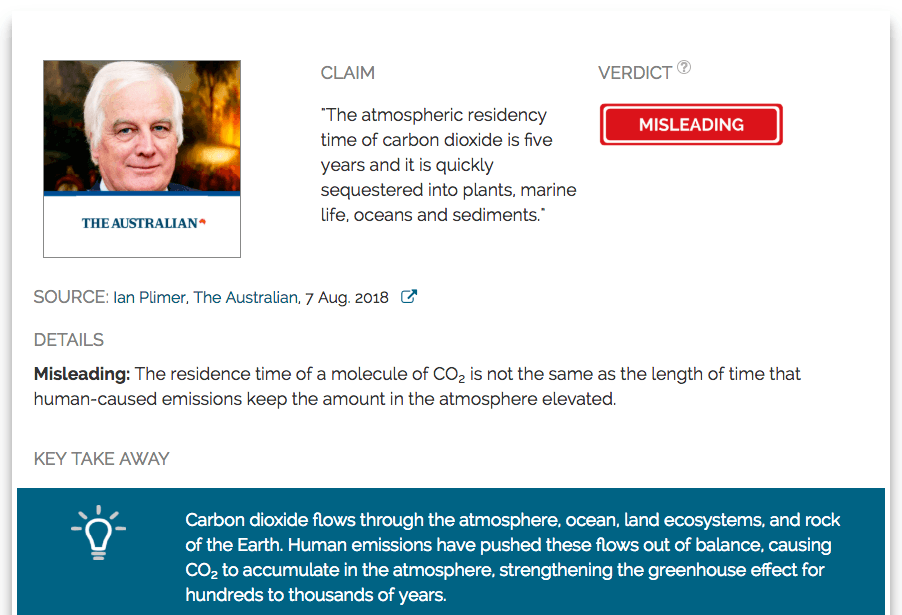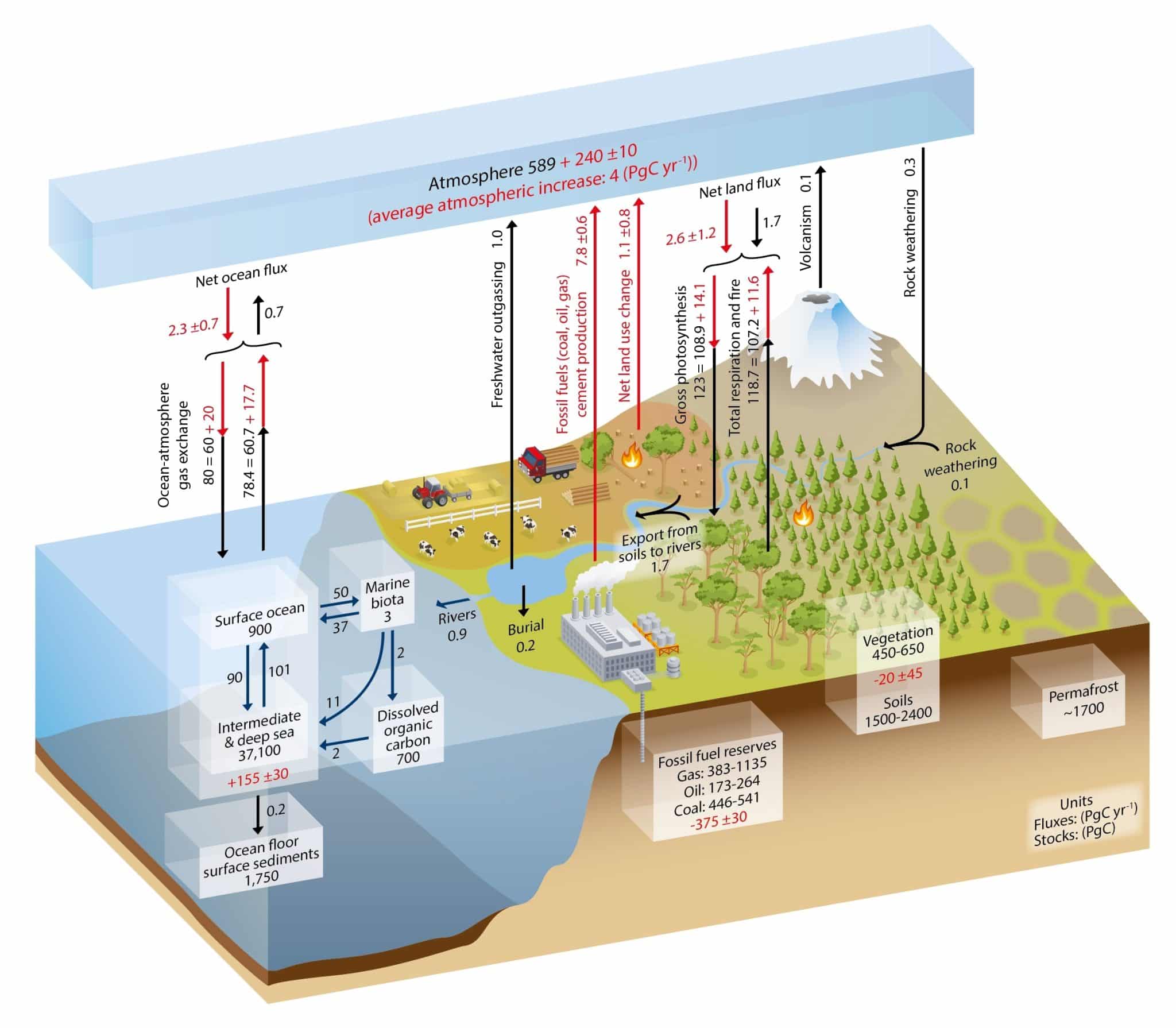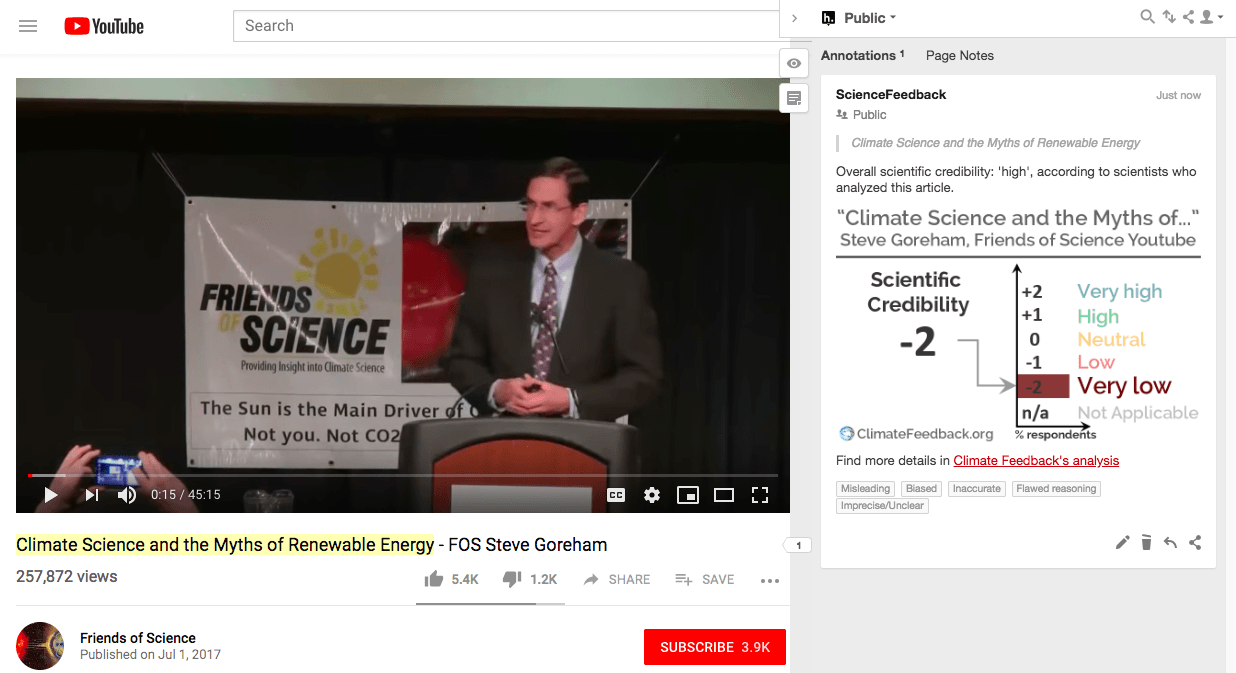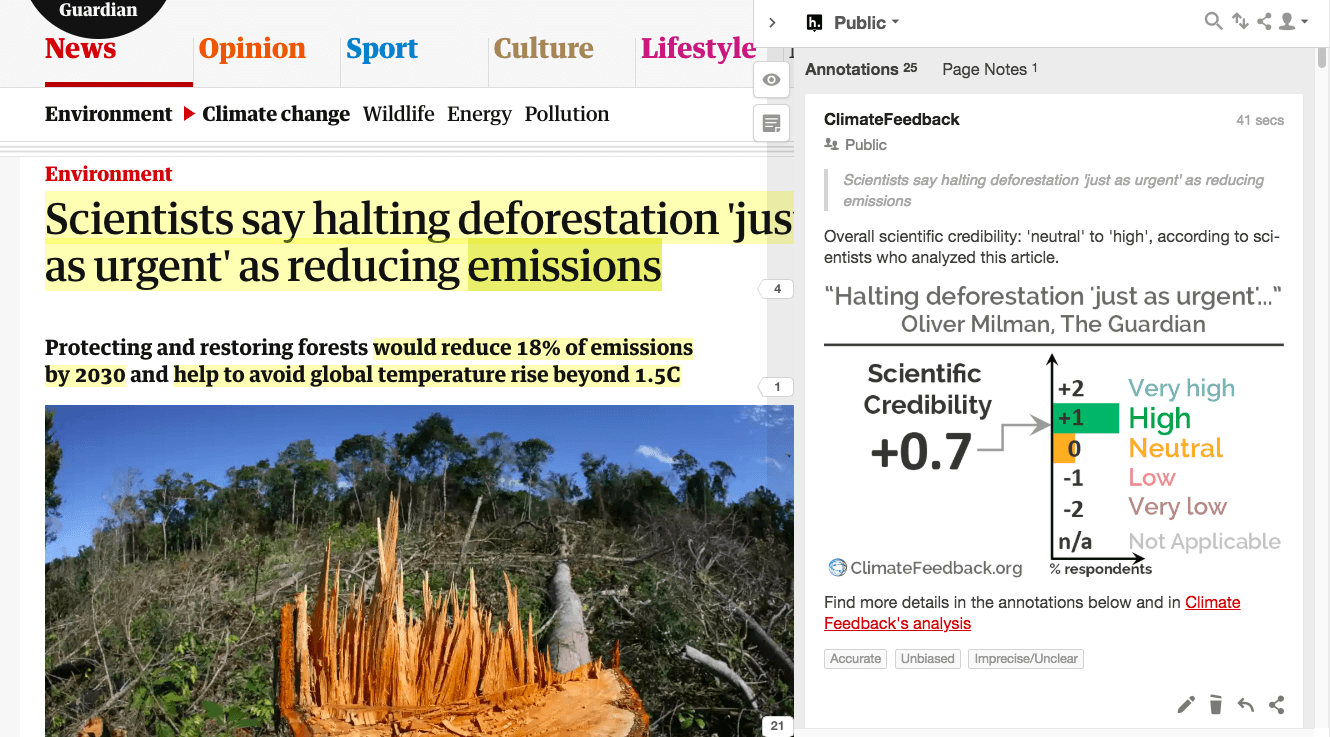- Climate
Ian Plimer incorrectly claims human-caused emissions are short-lived
Key takeaway
Carbon dioxide flows through the atmosphere, ocean, land ecosystems, and rock of the Earth. Human emissions have pushed these flows out of balance, causing CO2 to accumulate in the atmosphere, strengthening the greenhouse effect for hundreds to thousands of years.
Reviewed content

Verdict:
Claim:
The atmospheric residency time of carbon dioxide is five years and it is quickly sequestered into plants, marine life, oceans and sediments.
Verdict detail
Misleading: The residence time of a molecule of CO2 is not the same as the length of time that human-caused emissions keep the amount in the atmosphere elevated.
Full Claim
The atmospheric residency time of carbon dioxide is five years and it is quickly sequestered into plants, marine life, oceans and sediments.
This statement of the “short residence time” has been misused in the past. This statement ignores the fact that there is a dynamic exchange between the atmosphere and the ocean. See e.g. Figure 6-01 in the IPCC 2013 report (copied below)—while the ocean indeed takes up about 80 billion metric tonnes of Carbon per year from the atmosphere, it also releases about 78 billion metric tonnes of Carbon per year back, hence CO2 molecules are not immediately sequestered as suggested by the author, but are subject to a dynamical exchange leaving the annual net sequestration to be on the order of 2billion metric tonnes of Carbon per year, or only roughly 20-25 % of the annual human-caused CO2 emissions. This number is supported by models and measurements of the partial pressure of carbon dioxide in the ocean.
Figure – Simplified schematic of the global carbon cycle. Source
There are many papers that looked at the time it would take for natural negative feedbacks to remove the excess carbon from the atmosphere. It would take millennia*.
- Eby et al (2008) Lifetime of Anthropogenic Climate Change: Millennial Time Scales of Potential CO2 and Surface Temperature Perturbations, Journal of Climate




